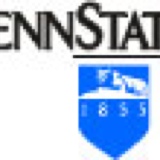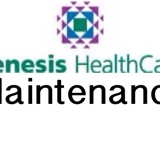Title Page
-
Conducted on
-
Prepared by
-
Location
-
Select date
-
Add location
Inspector(s):
Building:
Department:
A. HOUSEKEEPING
-
1. Does the area have a clean and orderly appearance?
-
2. Is the shop free from trip / slip hazards?
B.CHEMICAL SAFETY
-
1. Are all chemical containers and cylinders clearly labeled as to their contents?
-
2. Are containers in good condition?
-
C. PERSONAL PROTECTIVE EQUIPMENT (PPE)
-
1. Is appropriate PPE available and used where required?
-
(a) Eye Protection
-
(b) Hand Protection?
-
(c) Hearing Protection?
-
(d) Foot Protection?
-
(e) Respiratory Protection2
-
2. Are showers / eye wash stations labeled, accessible, and routinely inspected?
D. FIRE PROTECTION
-
1. Are exits clearly identified and accessible?
-
Are fire extinguishers available and clearly accessible?
-
Are all fire extinguishers mounted to the wall?
-
Have all fire extinguishers been serviced within the past 12 months?
-
Are emergency pull stations visible and clearly accessible?
-
Do sprinkler heads have at least 18 inches of vertical clearance?
-
Are oily rags and combustible wastes kept in metal containers?
-
Are flammable liquids properly stored in approved containers / cabinets?
E. ELECTRICAL SAFETY
-
1. Is the area free from exposed wiring / frayed cords?
-
2. Are all disconnecting means labeled to indicate their use or equipment served?
-
3. Is at least three feet of clear space provided in front of all electrical panels?
-
4. Are all electrical openings (knockouts) covered?
-
5. Are electrical enclosures (switches, outlets, etc.) equipped with tight fitting covers?
-
6. Are all extension cords equipped with a grounding conductor?
-
7. Are portable tools either grounded or double-insulated?
F. EQUIPMENT / MACHINERY
-
1. Is equipment free from any exposed moving parts / pinch points?
-
2. Is machine guarding in good condition and working properly?
-
3. Are emergency stop mechanisms identified and working properly?
-
4. Are equipment controls clearly labeled?
-
5. Are all warning stickers legible?
-
6. Are all extension cords equipped with a grounding conductor?
-
7. Is equipment adequately secured against "walking" or moving while in operation?
-
8. Are bench / pedestal grinders adequately guarded and equipped with a work rest? <br>(Work rest must be adjusted to within 1/8" of the grinding wheel).
-
9. Is the adjustable tongue on the grinder kept adjusted within 1/4 inches of the wheel?
-
10. Is compressed air pressure adequately controlled to protect the area personnel?<br>(Pressure at tip of air guns must be limited to < 30 p.s.i. if dead-ended)
-
11. Is all equipment capable of being locked out during servicing?
-
12. Are all hand tools in good condition? (i.e. no broken / cracked handles or parts)
G. MATERIAL STORAGE AND HANDLING
-
1. Is all material stacked in a stable manner?
-
2. Are compressed gas cylinders properly secured?
-
3. Are protective caps placed on all cylinders that are not in use?
-
4. Are mechanical devices available for use with heavy loads (> 50 pounds)?
-
5. Are load ratings clearly marked on all hoisting equipment?
H. OCCUPATIONAL HEALTH
-
1. Does ventilation have adequate flow (no excessive fumes / dust accumulation)?
-
2. Are exhaust ducts in good condition?
-
3. Is local ventilation used where required?
-
4. Are noise levels not excessive?
-
5. Is lighting adequate?
-
6. Are there any repetitive motion concerns or awkward work postures?
-
7. Are first aid supplies kept in accordance with PSU Policy SY21?
I. HAZARDOUS WASTE
-
1. Are waste materials placed in the proper receptacles?
-
2. Is waste removed on a routine basis?
-
3. Are waste containers properly labeled?
-
4. Are spill cleanup materials available?
J. MISCELLANEOUS:
-
Note any other miscellaneous hazards not covered by checklist:
COMMENTS:
-
Note any comments related to specific hazards uncovered during inspection:











